




Related bibliographies:
Reptiles
 Lizards Lizards
 Eublepharidae Eublepharidae
Asia
Middle East






































































































































































































































































































































| |

Bibliography of the genus
Eublepharis (Southwest Asian Fat-tailed Geckos)

(Reptilia: Sauria: Eublepharidae)
Note:
In order to limit redundancy, relevant literature indexed in the related bibliographies in the left column may not have been included in this page. For a comprehensive search of literature, these bibliographies should therefore also be consulted.
Eublepharis in general
 |
Achim, R.B. 1976. Second contribution to the systematics of the southwest Asian lizards of the gekkonid genus Eublepharis Gray 1827: materials from the Indian subcontinent. Saurologica 2: 1-15.
Börner, A.R. 1976. Second contribution to the systematics of the southwest Asian lizards of the geckonid genus Eublepharis Gray 1827: materials from the Indian subcontinent. Saurologica 2: 1-15.
Goris, R.C. 1983. [Captive reproduction: successes and failures (abstract)]. (In Japanese). Japanese Journal of Herpetology 10(2): 58.
Griesshammer, K.; Köhler, G. 2006. Leopardgeckos. Pflege, Zucht, Erkrankungen, Farbvarianten. Herpeton, Offenbach. 142 pp.
Henkel, F.W.; Knothig, M.; Schmidt, W. 2000. Leopardgeckos. Natur und Tier-Verlag, Münster. 79 pp.
Keller, G.; Schneider, E.G. 2006. Leopardgeckos. Ulmer, Ruhmannsfelden. 96 pp.
Matsui, T. 1973. [Studies on tail form of the genus Eublepharis]. (In Japanese). Acta Herpet. Jap. 4(1-4): 29-30.
Szczerbak, N.N.; Golubev, M.L. 1986. [The gekkonid fauna of the USSR and adjacent countries. Guide to identification]. (In Russian). Naukova Dumka, Kiev. 234 pp.
Szczerbak, N.N.; Golubev, M.L. 1996. Gecko fauna of the USSR and contiguous regions. (Contributions to Herpetology. Vol. 13). SSAR (Society for the Study of Amphibians and Reptiles). 233 pp. (Translation of: Gekkony fauny SSSR i sopredelnykh stran. Opredelitel. Translation by: Golubev, M.L. & Malinsky, S.A.).
Tashjian, J.H.; Scheidt, V. 1988. The eublepharine geckos. Jewels of the night. Vivarium (Lakeside) 1(3): 27-30.
|
Eublepharis angramainyu
 |
Anderson, S.C.; Leviton, A.E. 1966. A new species of Eublepharis from southwestern Iran (Reptilia: Gekkonidae). Occasional Papers of the California Academy of Sciences 53: 1-5.
Baloutch, M.; Thireau, M. 1986. Une espece nouvelle de gecko Eublepharis ensafi (Sauria, Gekkonidae, Eublepharinae) du Khouzistan (Sud ouest de l'Iran). Bulletin Mensuel de la Societe Linneenne de Lyon 55(8): 281-288.
Bauer, A.M.; Russell, A.P. 1991. The maximum size of giant geckos: a cautionary tale. Bulletin of the Chicago Herpetological Society 26(2): 25-26.
Göcmen, B.; Tosunoglu, M.; Ayaz, D. 2002. First record of the leopard gecko Eublepharis angramainyu (Reptilia: Sauria: Eublepharidae) from Anatolia. Herpetological Journal 12(2): 79-80.
Grismer, L.L. 1989. Eublepharis ensafi Baloutch and Thireau, 1986: a junior synonym of E. angramainyu Anderson and Leviton, 1966. Journal of Herpetology 23(1): 94-95.
Karamiani, R.; Rastegar-Pouyani, N. 2010. New specimens of Eublepharis angramainyu Anderson & Leviton, 1966 (Sauria: Eublepharidae), from south-western region of the Iranian Plateau. Hamadryad 35(1): 116-121.
Martens, H.; Kock, D. 1991. Erstnachweise für drei Gecko-Gattungen in Syrien. (Reptilia: Sauria: Gekkonidae). Senckenbergiana Biologica 71(1-3): 15-21.
Moradi, N.; Shafiei, S. 2011. New record of the Western leopard gecko, Eublepharis angramainyu Anderson & Leviton, 1966 (Sauria: Eublepharidae) from southeastern Iran. Amphibian and Reptile Conservation 5(1): 88-91.
Tosunoglu, M.; Ayaz, D.; Tok, C.V.; Olgun, K.; Afsar, M. 2005. Morphology of Eublepharis angramainyu Anderson & Leviton, 1966 in Turkey. Herpetozoa 18(1-2): 61-62.
Uzum, N.; Avci, A.; Ilgaz, C.; Olgun, K. 2008. A new specimen of Eublepharis angramainyu Anderson et Leviton, 1966 (Reptilia: Sauria: Eublepharidae), leopard gecko, in southeastern Anatolia, Turkey. Russian Journal of Herpetology 15(2): 129-132.
|
Eublepharis fuscus
 |
Das, I. 1997. Resolution of the systematic status of Eublepharis macularius fuscus Borner, 1981 (Eublepharidae: Sauria: Squamata). Hamadryad 22(1): 13-20.
Mirza, Z.A.; Upadhye, R. 2010. Zur Verbreitung und Lebensweise des in Indien endemischen Lidgeckos Eublepharis fuscus Börner, 1981. Sauria (Berlin) 32(3): 15-23.
|
Eublepharis hardwickii
 |
Chandra, G.; Chatterjee, S.N.; Datta, C.; Majumdar, M.; Nath, A. 1997. Occurrence of the fat tailed gecko, Eublepharis hardwickii Grey (Sauria: Gekkonidae) with remarks on the variation in certain taxonomic characteristics. Journal of the Bombay Natural History Society 94(1): 165-166.
Chandra, K.; Gupta, Y.N. 2005. East Indian leopard gecko (Eublepharis hardwickii Gray) found in Pachmarhi Biosphere Reserve (Eublepharidae: Sauria: Squamata). Reptile RAP 7: 2.
Khajuria, H. 1986. On habits of some central Indian lizards with morphological notes on Eublepharis hardwickii Gray. Records of the Zoological Survey of India 83(1-2): 19-23.
Onial, J.N. 1932. The fat-tailed lizard (Eublepharis hardwickii). Journal of the Bombay Natural History Society 35: 903.
Prakash, S.; Raziuddin, M.; Mishra, A.K. 2014. Record of East Indian Leopard Gecko Eublepharis hardwickii Gray, 1827 (Squamata: Sauria: Eublepharidae) from Hazaribag, Jharkhand, India. Reptile Rap 16: 24-26.
Singh, L.A.K. 1985. Eublepharis hardwickii (Reptilia, Gekkonidae), the kalakuta, observed at Tikerpada, Orissa. Journal of the Bombay Natural History Society 81(3): 708-709.
|
Eublepharis macularius
 |
Abraham, G. 1986. Eublepharis macularius (Blyth). Sauria (Berlin) 8(1): 33-34.
Allen, M.E.; Crissey, S.D.; Demeter, B.J. 1986. The effect of diet on growth and bone development in the leopard gecko. American Association of Zoo Veterinarians Annual Proceedings 1986: 44-45.
Allen, R. 1983. The leopard gecko. Rephiberary 72: 5.
Andrews, R.M.; Skewes, S.A. 2017. Developmental origin of limb size variation in lizards. Evolution & Development 19(3): 136-146.
Angell, N. 1994. I'm a mummy!!". Rephiberary 202: 11-12.
Angilletta, M.J.; Montgomery, L.G.; Werner, Y.L. 1999. Temperature preference in geckos: diel variation in juveniles and adults. Herpetologica 55(2): 212-222.
Bonke, R.; Böhme, W.; Opiela, K.; Rödder, D. 2011. A remarkable case of cannibalism in juvenile Leopard Geckos, Eublepharis macularius (Blyth, 1854) (Squamata: Eublepharidae). Herpetology Notes 4: 211-212.
Bradley, T.; Nieves, D. 1999. Leopard gecko, Eublepharis macularius, captive care and breeding. Bulletin of the Association of Reptilian and Amphibian Veterinarians 9(3): 36-40.
Bragg, W.K.; Fawcett, J.D.; Bragg, T.B.; Viets, B.E. 2000. Nest-site selection in two eublepharid gecko species with temperature-dependent sex determination and one with genotypic sex determination. Biological Journal of the Linnean Society 69(3): 319-332.
Brandstätter, F. 1992. Observations on the territory-marking behaviour of the gecko Eublepharis macularius. Hamadryad 17: 17-20.
Brillet, C. 1990. Role des informations olfactives et visuelles dans la discrimination du sexe deux especes de geckos nocturnes: Eublepharis macularius et Paroedura pictus. Biology of Behaviour 15(1): 1-22.
Brillet, C. 1991. Analyse comparative de la structure du comportement sexuel chez deux especes de geckos nocturnes: Eublepharis macularius et Paroedura pictus (Sauria, Gekkonidae). Behaviour 117(1-2): 117-143.
Brillet, C. 1993. Behavioural cues in sex recognition by two species of nocturnal lizards: Eublepharis macularius and Paroedura pictus. Amphibia-Reptilia 14(1): 71-82.
Bull, J.J. 1987. Temperature-dependent sex determination in reptiles: validity of sex diagnosis in hatchling lizards. Canadian Journal of Zoology 65(6): 1421-1424.
Bull, J.J. 1987. Temperature-sensitive periods of sex determination in a lizard: similarities with turtles and crocodilians. Journal of Experimental Zoology 127(1): 143-148.
Bull, J.J.; Gutzke, W.H.N.; Bulmer, M.G. 1988. Nest choice in a captive lizard with temperature-dependent sex determination. Journal of Evolutionary Biology 1(2): 177-184.
Cooper, W.E. 1995. Prey chemical discrimination and foraging mode in gekkonoid lizards. Herpetological Monographs 9: 120-129.
Cooper, W.E.; DePerno, C.S.; Steele, L.J. 1996. Do lingual behaviors and locomotion by two gekkotan lizards after experimental loss of bitten prey indicate chemosensory search? Amphibia-Reptilia 17(3): 217-231.
Cooper, W.E.; DePerno, C.S.; Steele, L.J. 1996. Effects of movement and eating on chemosensory tongue-flicking and on labial-licking in the leopard gecko (Eublepharis macularius). Chemoecology 7(4): 179-183.
Cooper, W.E.; Habegger, J.J. 2000. Lingual and biting responses to food chemicals by some eublepharid and gekkonid geckos. Journal of Herpetology 34(3): 360-368.
Cooper, W.E.; Steele, L.J. 1997. Pheromonal discrimination of sex by male and female leopard geckos (Eublepharis macularius). Journal of Chemical Ecology 23(12): 2967-2977.
Craioveanu, O.; Craioveanu, C.; Miresan, V. 2017. Plasticity of thermoregulatory behavior in leopard geckos (Eublepharis macularius, Blyth 1954). Zoo Biology 36(4): 273-277
Crews, D.; Sakata, J.; Rhen, T. 1998. Developmental effects on intersexual and intrasexual variation in growth and reproduction in a lizard with temperature-dependent sex determination. Comparative Biochemistry and Physiology C Pharmacology Toxicology and Endocrinology Special Issue 119(3): 229-241.
Das, I. 1992. Cyrtodactylus madarensis Sharma (1980), a junior synonym of Eublepharis macularius Blyth (1854). Asiatic Herpetological Research 4: 55-56.
Deeming, D.C. 1988. Eggshell structure of lizards of two sub-families of the Gekkonidae. Herpetological Journal 1(6): 230-234.
Delheusy, V.; Brillet, C.; Bels, V.L. 1995. Etude cinematique de la prise de nourriture chez Eublepharis macularius (Reptilia, Gekkonidae) et comparaison au sein des geckos. Amphibia-Reptilia 16(2): 185-201.
Delorme, S.L.; Lungu, I.M.; Vickaryous, M.K. 2012. Scar-free wound healing and regeneration following tail loss in the Leopard Gecko, Eublepharis macularius. Anatomical Record-Advances in Integrative Anatomy and Evolutionary Biology 295(10): 1575-1595.
Deperno, C.S.; Cooper, W.E. 1996. Labial-licking for chemical sampling by the leopard gecko (Eublepharis macularius). Journal of Herpetology 30(4): 540-543.
Douglas, R.M. 1990. The effects of temperature on embryonic sex determination and behaviour in reptiles, with special reference to Eublepharis macularis. Journal of the Herpetological Association of Africa 38: 28-31.
Duscha, D. 2006. The leopard gecko Eublepharis macularius. Reptilia (GB) 45: 12-21.
Flores, D.; Tousignant, A.; Crews, D. 1994. Incubation temperature affects the behavior of adult leopard geckos (Eublepharis macularius). Physiology & Behavior 55(6): 1067-1072.
Fuller, P.O.; Higham, T.E.; Clark, A.J. 2011. Posture, speed, and habitat structure: three-dimensional hindlimb kinematics of two species of padless geckos. Zoology (Jena) 114(2): 104-112.
Garthwaite, D.G. 1987. Geckos: Eublepharis macularis, Gehyra mutilata, Hemidactylus brooki, and Phelsuma dubia. pp. 38-41. In: Welch, K.R. Handbook on the maintenance of reptiles in captivity. Robert E. Kreiger, Florida. 156 pp.
Gauthier, C.; Lesbarréres, D. 2010. Growth rate variation in captive species: the case of Leopard Geckos, Eublepharis macularius. Herpetological Conservation and Biology 5(3): 449-455.
Gerard, P. 1996. Eublepharis macularius (gecko leopard). Bulletin de la Societe Herpetologique de France 77: 49-50.
Germann, E. 1983. Euplepharis macularius - Leopardgecko. Aquaria (St. Gallen) 30(10): 169-171.
Grigorjev, K. 1993. [The fat-tailed gecko]. (In Russian). Akvariumist (Akvariumy i Terrariumy) 7: 34-35.
Günther, A. 1864. Description of a new species of Eublepharis. Annals and Magazine of Natural History 14: 429.
Gutzke, W.H.N.; Crews, D. 1988. Embryonic temperature determines adult sexuality in a reptile. Nature (London) 332(6167): 832-834.
Hara, K. 1973. [Hatchings of Eublephavis macularius]. (In Japanese). Acta Herpet. Jap. 4(1-4): 20-21.
Hartwig, M. 2016. Der Leopardgecko - Eublepharis macularius. Natur und Tier-Verlag, Münster. 64 pp.
Higham, T.E.; Russell, A.P. 2010. Flip, flop and fly: modulated motor control and highly variable movement patterns of autotomized gecko tails. Biology Letters 6(1): 70-73.
Hingley, K. 1985. Maintenance and captive reproduction of the leopard gecko (Eublepharis macularis). Herptile 10(4): 123-128.
Hingley, K. 1987. The leopard gecko (Eublepharis macularius); a study of feeding, breeding and behavioural patterns under captive conditions. Herptile 12(1): 9-16.
Hofmann, E.G. 1971. The spotted desert gecko Eublepharis macularius. Care and breeding in captivity. Herp 7(3-4): 20-24.
Hotz, H. 1969. Gefangenschaftsbeobachtungen an einigen südwestasiatischen Geckos. DATZ (Die Aquarien- und Terrarien-Zeitschrift) 22: 279-282.
Howard, C.J. 1982. A note on oviposition in the leopard gecko. Herptile 7(3): 11.
Huang, V.; Crews, D. 2012. Differences induced by incubation temperature, versus androgen manipulation, in male leopard geckos (Eublepharis macularius). Physiology & Behavior 107(1): 121-124.
Huang, V.; Sakata, J.T.; Rhen, T.; Coomber, P.; Simmonds, S.; Crews, D. 2008. Constraints on temperature-dependent sex determination in the leopard gecko (Eublepharis macularius): response to Kratochvil et al. Naturwissenschaften 95(12): 1137-1142.
Huang, Z. 1964. [Two new records of Chinese reptiles from Hainan - Eublepharis macularius and Typhlops diardi]. (In Chinese). Acta Zoologica Sinica 16: 494-495.
Huang, Z.J. 1964. Two new records of Chinese reptiles from Hainan - Eublepharis macularius and Typhlops diardi. Acta Zoologica Sinica 16: 494-495.
Jagnandan, K.; Higham, T.E. 2017. Lateral movements of a massive tail influence gecko locomotion: an integrative study comparing tail restriction and autotomy. Scientific Reports 7: 10865
Jagnandan, K.; Russell, A.P.; Higham, T.E. 2014. Tail autotomy and subsequent regeneration alter the mechanics of locomotion in lizards. Journal of Experimental Biology 217(21): 3891-3897.
Janes, D.E.; Wayne, M.L. 2006. Evidence for a genotype X environment interaction in sex-determining response to incubation temperature in the leopard gecko, Eublepharis macularius. Herpetologica 62(1): 56-62.
Kahl, B. 1981. Ein fast stubenreiner Gecko. Aquarien Magazin 15(5): 316-317.
Khan, M.S. 2006. Lebensweise und Biologie des Leopardgeckos (Eublepharis macularius) in Pakistan. Reptilia (D) 11(57): 30-35.
Khan, M.S. 2006. Natural history and biology of the leopard gecko, Eublepharis macularius, in Pakistan. Reptilia (GB) 45: 22-27.
Kratochvil, L.; Frynta, D. 2003. Production-growth model applied in eublepharid lizards (Eublepharidae, Squamata): Accordance between growth and metabolic rates. Folia Zoologica 52(3): 317-322.
Kratochvil, L.; Kubicka, L.; Landova, E. 2008. Does the mechanism of sex determination constrain the potential for sex manipulation? A test in geckos with contrasting sex-determination systems. Naturwissenschaften 95(3): 209-215.
Kreutz, R. 2006. Farb-und Zeichnungsvarianten des Leopardgeckos (Eublepharis macularius). Reptilia (D) 11(57): 36-40.
Kumar Sharma, S. 1995. Colour change of tongue by fat-tailed gecko Eublepharis macularius. Journal of the Bombay Natural History Society 92(1): 126.
Kumar Sharma, S. 1995. Instance of a grey musk shrew (Suncus murinus) attacking a fat tailed gecko (Eublepharis macularius). Journal of the Bombay Natural History Society 92(3): 411.
LaDage, L.D.; Ferkin, M.H. 2006. Male leopard geckos (Eublepharis macularius) can discriminate between two familiar females. Behaviour 143(8): 1033-1049.
LaDage, L.D.; Ferkin, M.H. 2007. Do female leopard geckos (Eublepharis macularius) discriminate between previous mates and novel males? Behaviour 144(5): 515-527.
LaDage, L.D.; Gutzke, W.H.N.; Simmons, R.A.; Ferkin, M.H. 2008. Multiple mating increases fecundity, fertility and relative clutch mass in the female leopard gecko (Eublepharis macularius). Ethology 114(5): 512-520.
Manley, G.A.; Gallo, L.; Koppl, C. 1996. Spontaneous otoacoustic emissions in two gecko species, Gekko gecko and Eublepharis macularius. Journal of the Acoustical Society of America 99(3): 1588-1603.
Marcellini, D.L.; Davis, S.W. 1982. Effects of handling on reptile egg hatching. Herpetological Review 13(2): 43-44.
Martin, J. 1998. Keeping and breeding leopard geckos Eublepharis macularius. Herptile 23(3): 125-127.
Mason, R.T.; Gutzke, W.H.N. 1990. Sex recognition in the leopard gecko, Eublepharis macularius (Sauria: Gekkonidae): possible mediation by skin-derived semiochemicals. Journal of Chemical Ecology 16(1): 27-36.
Mertens, R. 1959. Über einige seltene Eidechsen aus West-Pakistan. DATZ (Die Aquarien- und Terrarien-Zeitschrift) 12: 307-310.
Meyer, M.; Schmidt, W. 2003. Eublepharis macularius: Leopardgeckos im Terrarium. DATZ (Die Aquarien- und Terrarien-Zeitschrift) 56(5): 38-42.
Miller, M.J. 1980. The leopard gecko, Eublepharis macularis (Gray). Bulletin of the Chicago Herpetological Society 15(1): 10-15.
Nalavade, S.B. 1998. Is fat-tailed gecko (Eublefaris [Eublepharis] macularius Blyth) spreading and establishing in wetter areas of the peninsula? Geobios New Reports 17(1): 92-93.
Philippen, H.D. 1989. Neue Erkenntnisse bei der 'temperaturabhängigen Geschlechtsfixierung'. Herpetofauna (Weinstadt) 11(61): 22-24.
Poister, B. de 1993. Care and breeding of leopard geckos (Eublepharis macularius). Dactylus 2(2): 76-78.
Prater, S.H. 1922. Food of the fat-tailed lizard (Eublepharis macularius). Journal of the Bombay Natural History Society 28: 811-812.
Pugsley, S.L.; Spratt, D.; Samour, J.H. 1985. Death in leopard geckos (Eublepharis macularius) following ingestion of vermiculite. Laboratory Animals (London) 19(4): 284-287.
Rhen, T.; Schroeder, A.; Sakata, J.T.; Huang, V.; Crews, D. 2011. Segregating variation for temperature-dependent sex determination in a lizard. Heredity 106(4): 649-660.
Rohde, H. 1991. Der Leopardgecko, Eublepharis macularius (Blyth 1854): immer noch für eine Überraschung gut. Sauria (Berlin) 13(3): 29.
Russell, A.P.; Higham, T.E. 2009. A new angle on clinging in geckos: incline, not substrate, triggers the deployment of the adhesive system. Proceedings of the Royal Society Biological Sciences Series B 276(1673): 3705-3709.
Russell, A.P.; Lynn, S.E.; Powell, G.L.; Cottle, A. 2015. The regenerated tail of juvenile Leopard Geckos (Gekkota: Eublepharidae: Eublepharis macularius) preferentially stores more fat than the original. Zoology (Jena) 118(3): 183-191.
Sabri, A.W.A.; Khalil, A. 1975. Study of the osteology of some Iraqi geckos. Bulletin Nat. Hist. Res. Cent. Univ. Baghdad 6(1): 68-72.
Sakata, J.T.; Gupta, A.; Chuang, C.P.; Crews, D. 2002. Social experience affects territorial and reproductive behaviours in male leopard geckos, Eublepharis macularius. Animal Behaviour 63(3): 487-493.
Schifter, H. 1967. Beobachtungen am Panthergecko, Eublepharis macularius (Blyth 1854). DATZ (Die Aquarien- und Terrarien-Zeitschrift) 20: 151-154.
Schifter, H. 1988. Bemerkenswerte Lebensdauer eines Eublepharis macularius (Blyth, 1854) (Sauria: Gekkonidae) in Gefangenschaft. Salamandra 24(4): 310-311.
Schradin, C. 2000. Confusion effect in a reptilian and a primate predator. Ethology 106(8): 691-700.
Sharma, R.C. 1980. Discovery of a luminous geckonid lizard from India. Bulletin of the Zoological Survey of India 3(1-2): 111-112.
Sharma, S.K. 1988. Fat-tailed gecko (Eublepharis macularius Blyth) captured from a quarry. Journal of the Bombay Natural History Society 85(2): 437.
Sleigh, M.J.; Birchard, G.F. 2001. Amount of prenatal visual stimulation alters incubation times and postnatal preferences in leopard geckos (Eublepharis macularius). Journal of Comparative Psychology 115(3): 233-240.
Steele, L.J.; Cooper, W.E. 1997. Investigations of pheromonal discrimination between conspecific individuals by male and female leopard geckos (Eublepharis macularius). Herpetologica 53(4): 475-484.
Sultana, A.; Hussain, M.S. 2010. Geographic distribution: Eublepharis macularius (Indian Leopard Gecko). Herpetological Review 41(4): 512.
Taylor, R.D. 1995. The leopard gecko: a good choice for the novice herpetophile. Tropical Fish Hobbyist 43(5): 132, 134-136, 138, 140-141, 143.
Thorogood, J.; Whimster, I.W. 1979. The maintenance and breeding of the leopard gecko Eublepharis macularius as a laboratory animal. International Zoo Yearbook 19: 74-78.
Tousignant, A.; Crews, D. 1995. Incubation temperature and gonadal sex affect growth and physiology in the leopard gecko (Eublepharis macularius), a lizard with temperature-dependent sex determination. Journal of Morphology 224(2): 159-170.
Tousignant, A.; Viets, B.; Flores, D.; Crews, D. 1995. Ontogenetic and social factors affect the endocrinology and timing of reproduction in the female leopard gecko (Eublepharis macularius). Hormones and Behavior 29(2): 141-153.
Viets, B.E.; Tousignant, A.; Ewert, M.A.; Nelson, C.E.; Crews, D. 1993. Temperature-dependent sex determination in the leopard gecko, Eublepharis macularius. Journal of Experimental Zoology 265(6): 679-683.
Villareal, D.L.; Fernandez, H.G. 1996. Bacterial flora present in skin, mouth and cloaca of the leopard gecko, Eublepharis macularius Blyth, 1854. Dactylus 3(1): 29-35.
Wagner, E. 1974. Breeding of the leopard gecko Eublepharis macularis at Seattle Zoo. International Zoo Yearbook 14: 84-86.
Werb, K. 1980. Notes on breeding the leopard gecko in captivity Eublepharis macularis. Herptile 5(4): 9-10.
Werner, Y.L.; Montgomery, L.G.; Safford, S.D.; Igic, P.G.; Saunders, J.C. 1998. How body size affects middle-ear structure and function and auditory sensitivity in gekkonoid lizards. Journal of Experimental Biology 201(4): 487-502.
Werner, Y.L.; Takahashi, H.; Mautz, W.J.; Ota, H. 2005. Behavior of the terrestrial nocturnal lizards Goniurosaurus kuroiwae kuroiwae and Eublepharis macularius (Reptilia: Eublepharidae) in a thigmothermal gradient. Journal of Thermal Biology 30(3): 247-254.
Wilms, T. 1989. Über die altersbedingte Zeichnungsveranderung bei Eublepharis macularius. Herpetofauna (Weinstadt) 11(62): 13-16.
Wilms, T. 2004. Der Leopardgecko - nicht nur ein Einsteigertier. Haltung und Vermehrung von Eublepharis macularius im Terrarium. Reptilia (D) 9(46): 56-62.
Zaaf, A.; Damme, R. van; Herrel, A.; Aerts, P. 2001. Spatio-temporal gait characteristics of level and vertical locomotion in a ground-dwelling and a climbing gecko. Journal of Experimental Biology 204(7): 1233-1246.
Zaaf, A.; Herrel, A.; Aerts, P.; Vree, F. de 1999. Morphology and morphometrics of the appendicular musculature in geckoes with different locomotor habits (Lepidosauria). Zoomorphology (Berlin) 119(1): 9-22.
|
Eublepharis satpuraensis
 |
Basak, K.; Ahmed, M.; Suraj, M.; Mondal, K. 2017. Reptile Rap: Satpura Leopard Gecko: range extension record of a newly described species, Eublepharis satpuraensis from Bhoramdeo Wildlife Sanctuary, Chhattisgarh, central India. Zoos' Print Magazine 32(6): 34-39.
Mirza, Z.A.; Sanap, R.V.; Raju, D.; Gawai, A.; Ghadekar, P. 2014. A new species of lizard of the genus Eublepharis (Squamata: Eublepharidae) from India. Phyllomedusa 13(2): 75-90.
|
Eublepharis turcmenicus
 |
Auer, M.; Richter, S.; Khani, A. 2008. A new record of the Turkmenian Fat-tailed Gecko, Eublepharis turcmenicus Darevsky, 1978, from north-eastern Iran (Squamata: Gekkonidae). Zoology in the Middle East 45: 107-110.
Grismer, L.L. 1991. Cladistic relationships of the lizard Eublepharis turcmenicus (Squamata: Eublepharidae). Journal of Herpetology 25(2): 251-253.
Kaverkin, Y.I.; Orlov, N.L. 1996. Experience of captive breeding of Eublepharis turcmenicus Darevsky, 1978 (Eublepharidae, Sauria). Russian Journal of Herpetology 3(1): 98-99.
Rösler, H. 1996. Field observations and captive husbandry in Eublepharis turcmenicus, Darewsky, 1978. Dactylus 3(1): 24-28.
Rösler, H. 1999. Paläarktische Geckos (Reptilia: Gekkota). Teil 2: Eublepharis turcmenicus Darevsky, 1978. Sauria (Berlin) 21(3): 21-26.
Rösler, H.; Szczerbak, N.N. 1993. Die Jugendentwicklung von Eublepharis turcmenicus Darewskij, 1978 im Terrarium. Salamandra 28(3-4): 275-278.
Rustamov, A.K.; Ataev, C.A.; Sopyev, O.S.; Makarov, A.N. 1985. [On the ecology of Eublepharis turkmenicus Darevsky, 1978]. (In Russian). Izvestiya Akademii Nauk Turkmenskoi SSR Seriya Biologicheskikh Nauk 1985(1): 3-7.
Szczerbak, N.N. 1979. [The Turkmen eublephar]. (In Russian). Priroda (Moscow) 1979(6): 83-85.
|
| | 


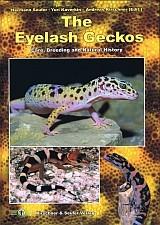

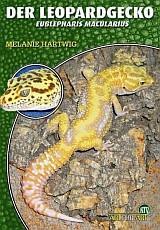

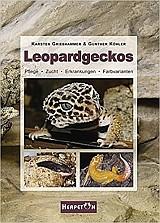

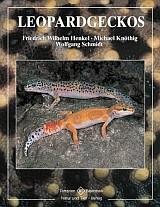

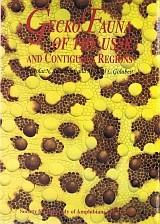











































































































































































|

